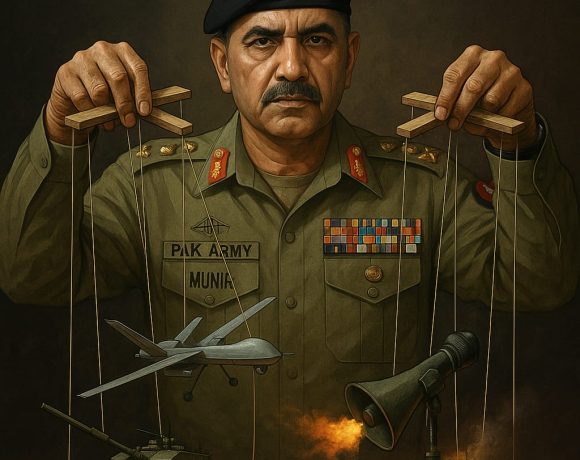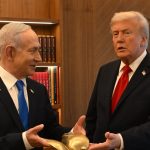
Trump’s Statement, Pakistan’s Sub-Critical Tests, and India’s Surgical Signal: How Deterrence Works in the Shadows
Donald Trump’s declaration that “Pakistan is conducting nuclear tests” reverberated across the world like a Cold War echo. Islamabad denied it immediately, India stayed cautious, and analysts scoured satellite feeds for evidence that never appeared. But the real story doesn’t lie in Trump’s bluster or Pakistan’s denials. It lies in the quiet tunnels of Kirana Hills and the calculated restraint of India’s precision strike nearby—a reminder that in South Asia’s nuclear theatre, deterrence doesn’t depend on detonations anymore. It thrives in the space between silence and signal.
Trump’s Statement – The Spark that Lit the Stage
When Trump claimed that Pakistan was “testing nukes,” it wasn’t intelligence speaking—it was politics. The timing was too perfect: Washington was debating the resumption of U.S. nuclear testing after a 33-year hiatus, and Trump’s assertion helped create an atmosphere of global urgency. By painting a picture of Pakistan breaking the taboo, he gave political cover to his own hawkish ambitions. It wasn’t about fissile material; it was about narrative fission.
The claim served several purposes. It justified a more aggressive U.S. nuclear posture. It put Pakistan under renewed scrutiny at a time when Washington was recalibrating alliances. And perhaps most strategically, it sought to draw India closer into the American orbit with the subtle message—“the neighborhood is unstable, we can help you stay safe.” In that sense, Trump’s statement was a geopolitical sales pitch disguised as a security warning. He blurred the boundary between scientific testing and political testing, turning the word “nuclear” into both weapon and advertisement.
Pakistan’s Sub-Critical Tests – The Quiet Continuum
The truth behind Trump’s exaggeration is that Pakistan is indeed “testing”—just not in the way the world imagines. Its scientists conduct sub-critical tests—controlled implosions of high explosives around non-fissile mock-ups of nuclear cores. These produce data on compression dynamics, yield prediction, and fuse behavior, but never reach the threshold of a self-sustaining chain reaction. In simple words: no flash, no fallout, no seismic trace.
These tests are legal under the Comprehensive Nuclear-Test-Ban Treaty, and they’re nearly impossible to detect. The Kirana Hills complex near Sargodha is the most likely location. Built in the 1980s for Pakistan’s “cold tests,” its tunnels, roads, and diagnostic shelters still appear intact in satellite imagery. Over time, the facility likely evolved from a crude experimental site into a quiet hydrodynamic testing lab—a place to validate miniaturized warhead designs for the Shaheen and Ababeel missile series. Pakistan keeps its deterrent alive not by detonating bombs but by perfecting simulations.
This silence is its strength. With no shock waves to measure or radionuclides to trace, Islamabad can deny everything and still keep its program evolving. That ambiguity frustrates global watchdogs—and delights politicians who can twist it into whichever narrative suits them.
India’s Warning Shots at Kirana Hills – Precision as Policy
Then came Operation Sindoor—India’s reported strike on the southern flank of Kirana Hills. The hit was surgical, not seismic: one precision impact visible on satellite imagery, no radiation leaks, no craters near the old adits. It wasn’t meant to destroy; it was meant to demonstrate. India’s choice of target said everything—we know where your secrets are, and we can reach them without causing chaos.
The strategy was textbook deterrence by precision. Striking the opposite slope avoided international panic over a “nuclear facility attack” while signaling technological confidence. It marked a departure from India’s earlier doctrine of massive retaliation. The new language of deterrence was subtler—speak softly, hit precisely.
Operation Sindoor also gave India moral high ground: no civilians, no escalation, and a clear message that any future “tests,” sub-critical or otherwise, would not go unobserved. In effect, Delhi transformed Trump’s noisy rhetoric into a quiet exhibition of control.
The Triangular Game of Optics and Deterrence
In this three-way interplay, each player walked away with a win of perception.
Trump got his political talking point—“others are testing, so America must act.”
Pakistan maintained its ambiguity—no proof of testing, no admission of halting.
India showed the world that it could strike deep into nuclear-linked territory and still stay within diplomatic boundaries.
That’s the new face of deterrence: optics, not explosions. When a high-resolution satellite image of a small crater can replace a 20-kiloton blast in shaping global behavior, it shows how nuclear competition has entered the information age. Deterrence today is about who tells the better story, not who carries the bigger warhead.
The Real Lesson – Deterrence in the Shadows
The world is witnessing a shift from the nuclear age to the sub-critical age—where nations flex capability without crossing the red line of open tests. Pakistan perfects implosions underground, the U.S. debates “non-explosive experiments,” and India masters precision signaling. The weapons may be silent, but the messaging is deafening.
Yet, this quiet game is dangerous. Misreading a satellite image, mistranslating a test log, or misinterpreting a political statement could still ignite escalation. A world that manages nuclear risks by inference rather than transparency walks a thin line between deterrence and disaster.
Trump’s statement may have been a lie dressed as intelligence, but it accidentally exposed a truth: South Asia’s nuclear deterrence now operates in half-shadows—neither at peace nor at war, neither testing nor resting. And India’s warning at Kirana Hills shows it understands the new rules perfectly. In an age of sub-critical physics, deterrence itself has gone sub-verbal.
The next nuclear crisis won’t start with a mushroom cloud. It will start with a satellite photo, a politician’s microphone, and a silence deep inside a hill.


















